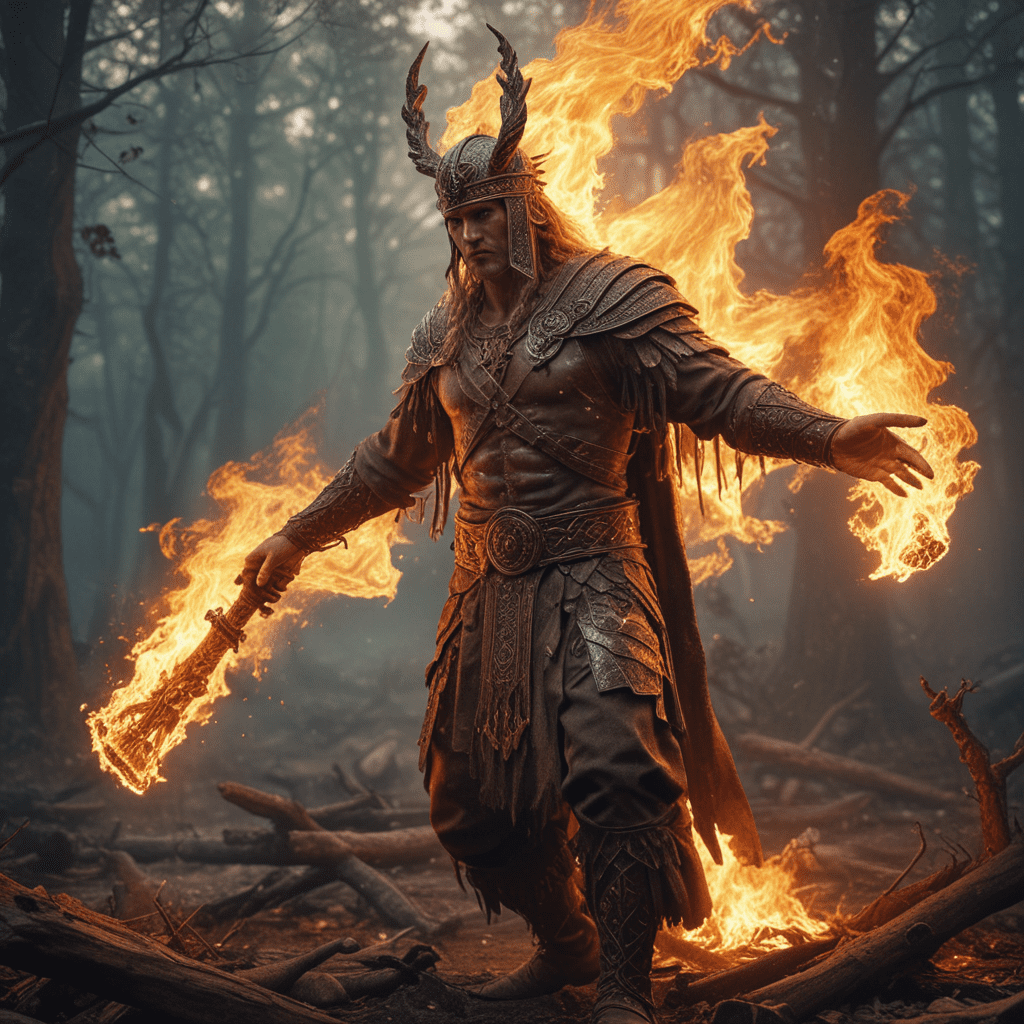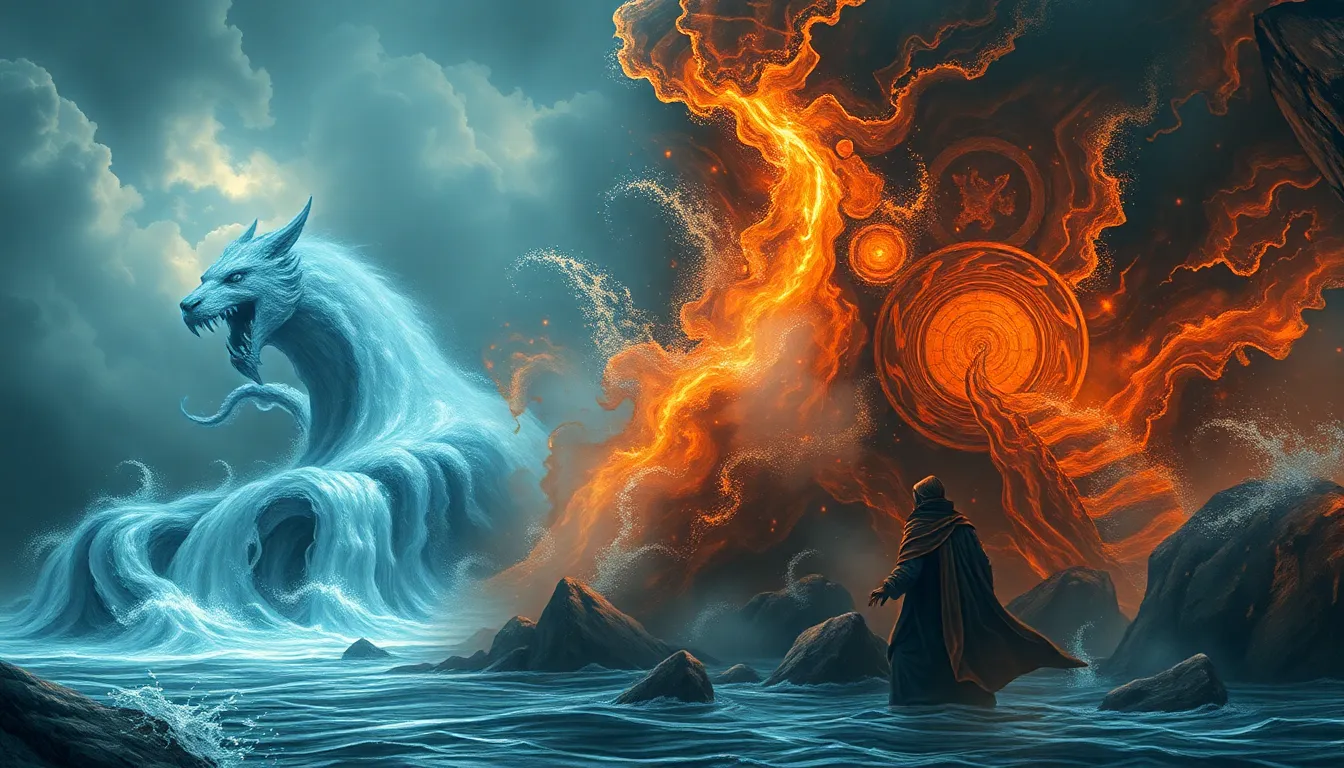Slavic Mythology: Beings of the Fire
1. Zhar-ptitsa – The Firebird of Slavic Folk Tales
In Slavic mythology, the Zhar-ptitsa, or Firebird, is a legendary creature known for its radiant plumage, which is said to emit a brilliant glow that can illuminate the night sky. Its feathers are adorned with iridescent colors, symbolizing the transformative power and beauty of fire.
In Slavic folk tales, the Firebird often appears as a magical helper or a guardian of secret treasures. Its fiery nature represents the transformative power of life and renewal, as well as the destructive force of untamed flames. The Firebird's feathers are highly sought after for their healing and rejuvenating properties, making them a valuable prize for heroes and adventurers.
2. Khort – Slavic God of the Sun and Fire
Khort, or Khors, was the Slavic god of the sun and fire, worshipped by the East Slavic tribes. His name is derived from the Proto-Slavic word "hor," meaning "heat" or "fire." Khort was closely associated with the celestial sphere, representing the life-giving force of the sun and the transformative power of fire.
Khort's worship was primarily centered around the summer solstice, when the sun was at its zenith. During this time, rituals and sacrifices were performed in his honor, seeking his blessings for abundant harvests, fertility, and protection from evil forces. Khort was also revered as the patron of warriors and defenders, embodying the courage and strength of fire.
3. Zorya and Danica – Goddesses of Dawn
Zorya and Danica, or Zorya Utrennyaya and Zorya Vechernyaya, were the twin goddesses of the dawn and the evening star in Slavic mythology. Zorya Utrennyaya represented the morning star, heralding the arrival of a new day, while Zorya Vechernyaya symbolized the evening star, marking the end of the day and the transition into night.
The goddesses were often depicted as beautiful maidens with golden hair, adorned with celestial jewelry. They were believed to open and close the gates of heaven, allowing the sun and the moon to pass through. Zorya Utrennyaya was associated with youth, beauty, and renewal, while Zorya Vechernyaya symbolized wisdom, experience, and the passage of time.
4. Kupala Night – Midsummer Bonfire and Fertility Ritual
Kupala Night, or Ivan Kupala, is a traditional Slavic festival celebrated around the summer solstice. It is a time of celebration and feasting, honoring the deities of nature and the sun. The festival is marked by bonfires, dancing, music, and purification rituals, all connected to the symbolism of fire and water.
The bonfires play a central role in the festival, representing the transformative power of fire and the purification of the spirit. People leap over the flames for good fortune and fertility, while wreaths of flowers are thrown into the fire as offerings to the gods. The night is believed to be magical, with legends of hidden treasures, blooming ferns, and the appearance of supernatural beings.
6. The Fire Demons: Ognevik and Ognennaya Baba
In Slavic mythology, the fire demons Ognevik and Ognennaya Baba embody the destructive and uncontrollable nature of fire. Ognevik, the demonic male figure, is known for his fiery appearance and his habit of setting fire to forests and homes. He is often associated with drought, chaos, and the destruction of property.
Ognennaya Baba, his female counterpart, is a fiery old woman who appears at night, often accompanied by a fiery broom. She is believed to cause house fires and torment those who have wronged her. Legends say that her touch can burn and her presence can bring misfortune.
7. Firebreathing Dragons of Slavic Folklore
Dragons play a significant role in Slavic folklore, often embodying the destructive and protective aspects of fire. The Zmey Gorynych, a three-headed dragon, is a legendary creature associated with volcanic mountains and fiery storms. Its heads represent the past, present, and future, and each head can breathe fire independently.
In some tales, dragons are portrayed as fierce protectors of hidden treasures and sacred objects. They possess immense strength and the ability to fly with their mighty wings, making them formidable opponents to heroes and adventurers.
8. Svarog – Slavic Sun and Fire God of Heaven
Svarog, the supreme god of the Slavic pantheon, is associated with both the sun and fire. He is the father of Dazhbog, the sun god, and the creator of the heavenly realm. Svarog is often depicted as a skilled blacksmith, forging the sun, stars, and celestial bodies in his heavenly forge.
His dominion over fire represents the creative and transformative aspects of this element. Svarog is believed to have taught humans the arts of metallurgy and blacksmithing, enabling them to harness the power of fire for practical and ceremonial purposes.
9. Fire and Healing in Slavic Beliefs
Fire played a vital role in Slavic healing practices and rituals. It was believed to possess purifying and healing properties, capable of cleansing impurities and warding off illnesses. Fire was used to burn herbs and resins for medicinal purposes, creating smoke that was inhaled for its therapeutic effects.
Ritual bonfires were also used to heal livestock and protect communities from diseases. The flames were believed to carry away impurities and create a protective barrier against malevolent spirits. Fire was a sacred element in Slavic folk medicine, symbolizing renewal, purification, and the restoration of health.
10. The Significance of Agni in Russian Fire Rituals
In Russian fire rituals, Agni, the Hindu god of fire, is often invoked to represent the sacred and transformative aspects of this element. Agni is believed to be the protector of the sacrifice and the mediator between the human and divine realms.
Through fire offerings, rituals, and prayers, Agni is invoked to carry the prayers and offerings of the faithful to the heavens. He is seen as a purifying force capable of transforming both physical and spiritual impurities. Agni's presence in Slavic fire rituals symbolizes the enduring bond between the Slavic and Vedic cultures.
FAQ:
Q: What is the significance of the Zhar-ptitsa in Slavic mythology?
A: The Zhar-ptitsa, or Firebird, embodies the transformative power of fire and is a magical helper in Slavic folk tales. Its radiant plumage and healing feathers symbolize renewal and rejuvenation.
Q: Who was Khort in Slavic mythology?
A: Khort was the Slavic god of the sun and fire, representing the life-giving force of the sun and the transformative power of flames. He was worshipped during the summer solstice for blessings of harvest and protection.
Q: What role did Zorya and Danica play in Slavic mythology?
A: Zorya and Danica were the twin goddesses of dawn and dusk, respectively. They opened and closed the gates of heaven, allowing the sun and moon to pass through. Zorya Utrennyaya (morning star) symbolized youth and renewal, while Zorya Vechernyaya (evening star) represented wisdom and experience.
Q: What is the origin of the fire demons Ognevik and Ognennaya Baba?
A: Ognevik and Ognennaya Baba are fire demons in Slavic mythology that embody the destructive and uncontrollable nature of fire. They are associated with arson, torment, and misfortune.
Q: What is the significance of dragons in Slavic folklore?
A: Dragons in Slavic folklore often represent both the destructive and protective aspects of fire. The Zmey Gorynych, a three-headed dragon, is associated with volcanic mountains and storms. Dragons are also seen as fierce protectors of hidden treasures and sacred objects.



